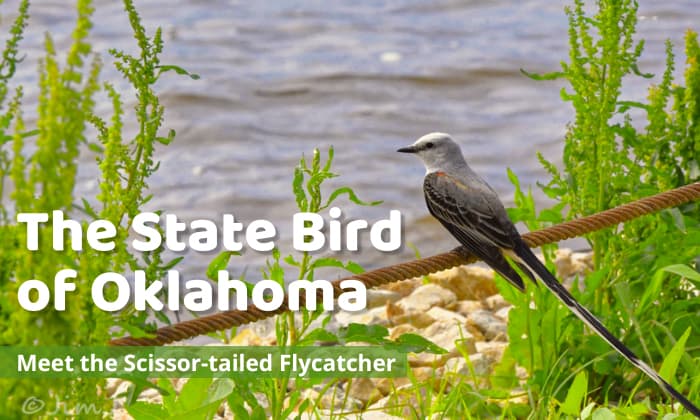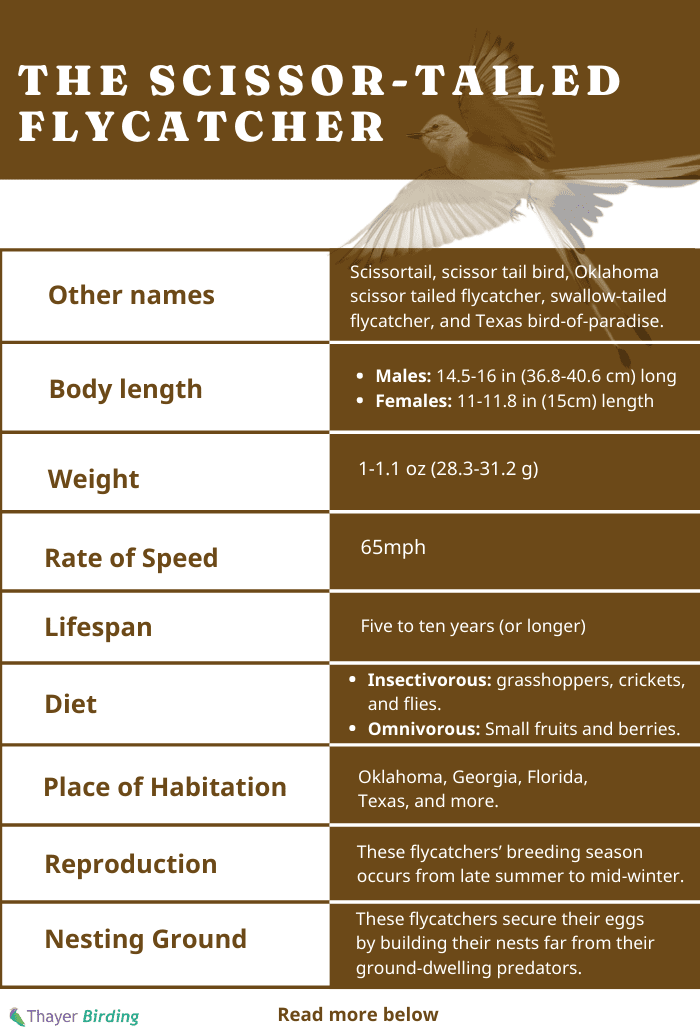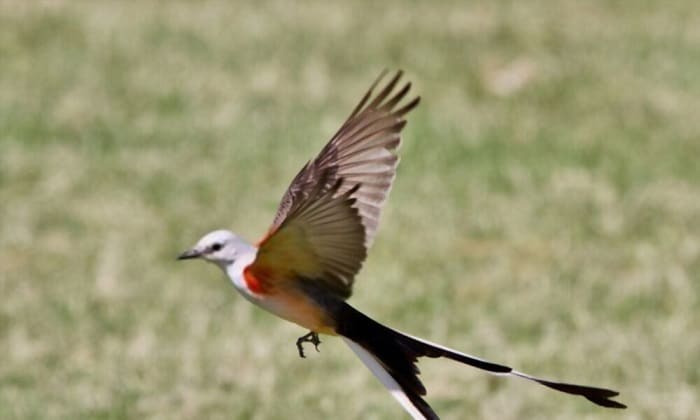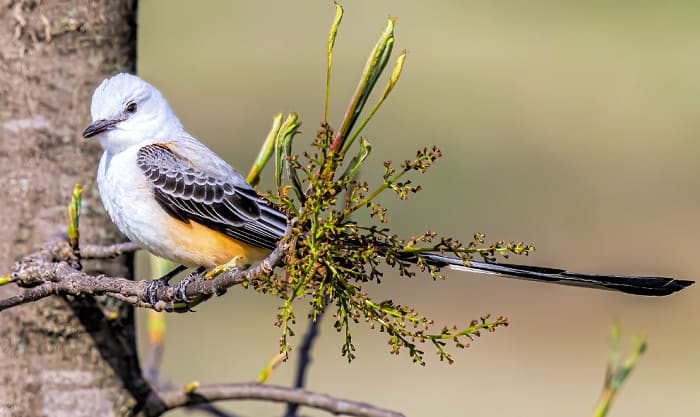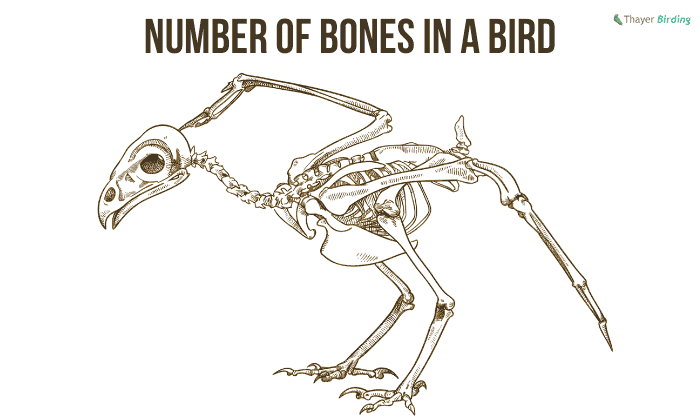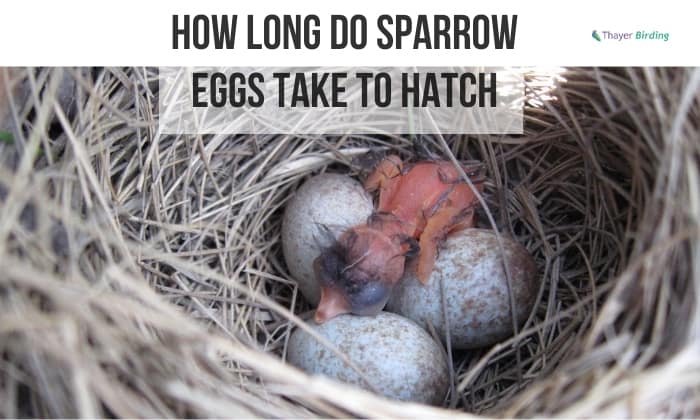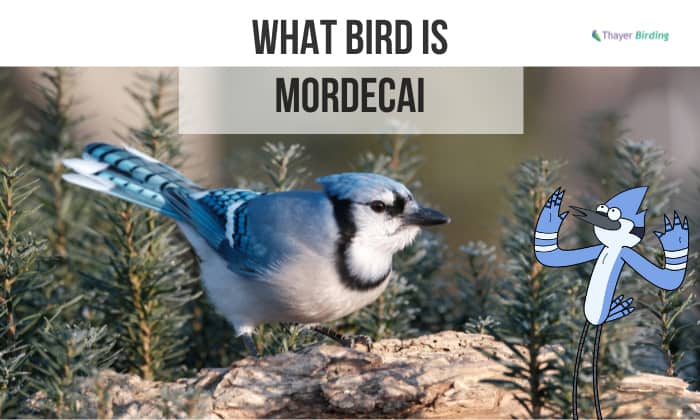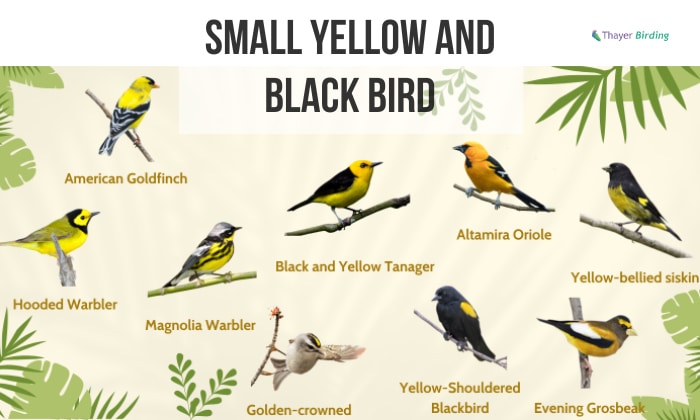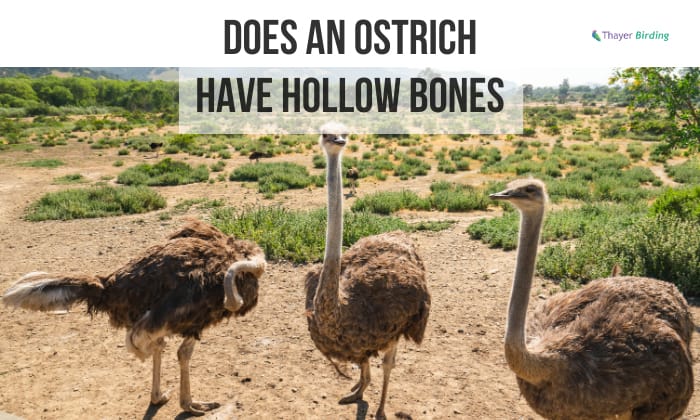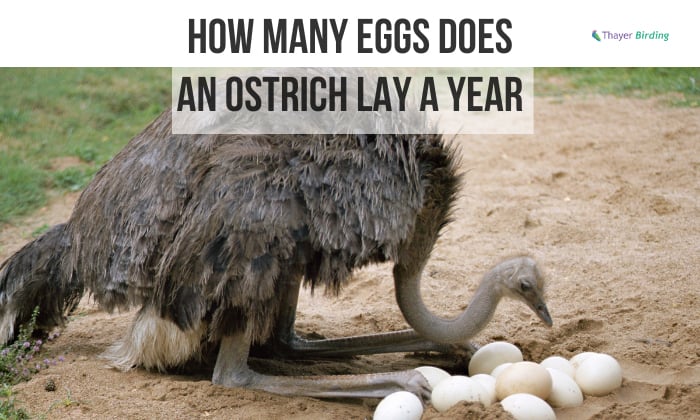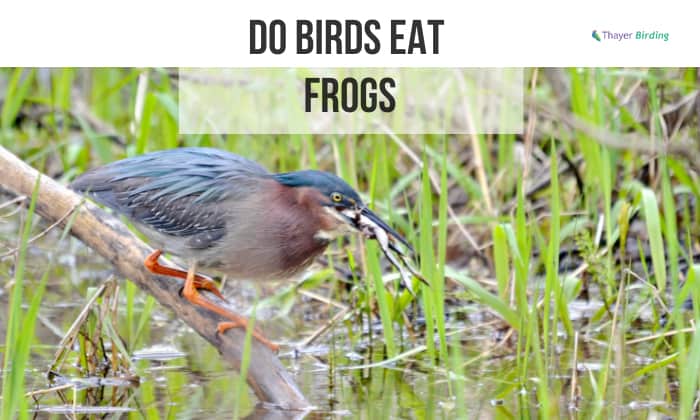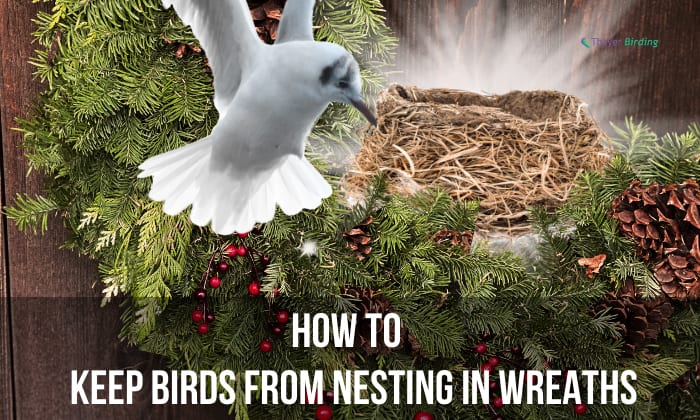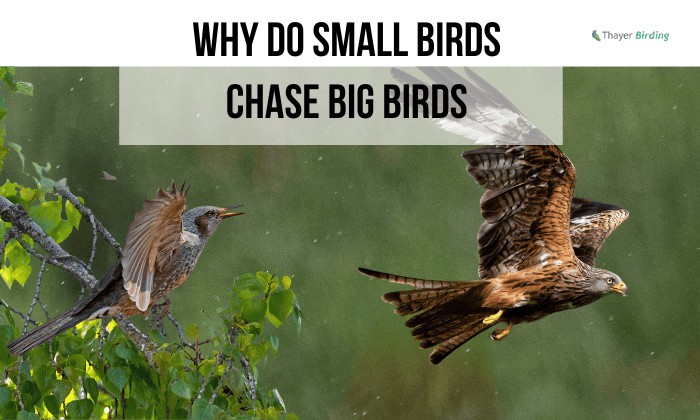Several states in the United States have a specific bird to represent their territory. These states chose their feathered representatives for various reasons, from their place of habitation to their unique features.
What is the state bird of Oklahoma? The Scissor-tailed Flycatcher is the Oklahoma state bird. Since Oklahoma has a diverse landscape, the state became the central nesting range for this flycatcher. It also eats insects, mainly flies, as its name suggests.
Table of Contents
All About Oklahoma’s Official State Bird
Most states have representative symbols, from their state bird and flower to colors and motto. Did you know the Oklahoma state motto, “Labor omnia vincit” means “Work conquers all”? That’s a random fact you’d love to know!
Meanwhile, the scissor-tailed flycatcher—the quiet yet strikingly ethereal bird—became the Oklahoma state bird in May 1951.
No other bird in Oklahoma matches its distinctive beauty, showcased when performing its famous “sky dance.” Moreover, this bird plays an essential economic role in the state as they prey on ground-dwelling insects that live on farms and ranches.
Hop on to know more about this feathered beauty.
1. Other names
Oklahoma’s official state bird has other names such as scissortail, scissor tail bird, Oklahoma scissor tailed flycatcher, swallow-tailed flycatcher, and Texas bird-of-paradise.
Meanwhile, its Latin name is Muscivora forficata, which came from the Latin words for “fly” (musca), “to devour” (vorare), and “scissors” (forfex).
The scissor tail bird falls under the genus Tyrannus, which describes the “tyrant-like flycatchers” that are highly aggressive towards other birds that enter their breeding areas.
2. Size
As the pictures suggest, the Oklahoma scissor tailed flycatcher is typically small. However, they’re bigger than the Texas state bird, the Northern Mockingjay, and almost the same size as the Pennsylvania state bird, the Ruffed Grouse.
Males are typically 14.5-16 in (36.8-40.6 cm) long, while females range from 11-11.8 in (15cm) length. Their weight lies between 1-1.1 oz (28.3-31.2 g).
Their wingspan is typically around 5.9 in (15cm) long.
3. Rate of Speed
Scissor-tailed flycatchers can travel up to 65mph.
4. Lifespan
The scissor-tailed bird can live for approximately five to ten years (or longer), depending on its habitat.
5. Diet
This bird relies on its insectivorous diet consisting of ground-dwelling insects such as grasshoppers, crickets, and flies. This diet benefits farmers and ranchers whose vegetation became infested with non–valuable and harmful insects.
Moreover, these birds are omnivorous, which explains why they eat small fruits and berries as a complementary food, especially when insects are scarce.
6. Place of Habitation
Oklahoma’s state bird doesn’t just live in Oklahoma. This migratory bird species is endemic to North, South, and Central America, with its population spread across the diverse landscape in these regions.
Hence, other than Oklahoma, it’s easy to see the flycatcher bird in Georgia, Florida, Texas, and more.
7. Reproduction
In Oklahoma, these flycatchers’ breeding season occurs from late summer to mid-winter.
Male flycatchers execute graceful aerial displays, also known as “sky dance,” to attract scissor-tailed flycatchers as potential mates. This extravagant mating dance shows off their long, forked tails while they make buzzing calls.
Once they’ve paired off, the female flycatchers lay one to three eggs in cup-shaped nests, sometimes reaching six in a clutch.
8. Nesting Ground
These flycatchers secure their eggs by building their nests far from their ground-dwelling predators. These nests are typically on trees and man-made poles, including utility lines and fences.
They construct their cup-shaped nests from weeds, twigs, grass, and small pieces of strings and paper.
Frequently Asked Questions
The scissor-tailed bird holds an exceptional beauty and charm that undoubtedly made it Oklahoma’s official state bird.
There’s much to learn about this feathered representative, so let’s answer the frequently asked questions about this flycatcher.
Why is the scissor-tailed flycatcher chosen as the state bird for Oklahoma?
The scissortail became Oklahoma’s official state bird for three reasons:
- Oklahoma was the central nesting ground for the scissortail, particularly during its breeding season.
- This flycatcher feeds on ground-dwelling insects, including harmful ones, that sometimes terrorize the vegetation in the state, making it valuable for pest control.
- No other American state has designated the scissor-tailed flycatcher as its official state bird.
When was the scissor-tailed flycatcher proclaimed as the state bird for Oklahoma?
The scissor-tailed flycatcher became Oklahoma’s state bird by House Joint Resolution Number 21, enacted on May 26, 1951.
What does the scissor-tailed flycatcher look like?
As the pictures depict, the scissor-tailed flycatcher has a long, sleek, and recognizable forked tail in distinct black and white.
Meanwhile, its body has a gray plumage, white underbelly, and specks of red or salmon pink under its wings, connecting it to the flycatcher’s body.
Male and female flycatchers resemble each other, except for females’ lighter coloring.
What is unusual about the state bird of Oklahoma?
As its name suggests, the scissor-like tail of Oklahoma’s state bird makes it unusual among other birds. Apart from its extravagant appeal, this tail helps the bird easily capture its prey with elegance.
Are scissor-tailed flycatchers endangered?
These flycatchers are not an endangered species. However, they fall under the Least Concern category, as the IUCN Red List suggests.
Although they aren’t endangered, there’s a decline in this species’ population due to habitat loss.
Conclusion
Like other states in America, Oklahoma has its official state bird to represent its territory. Therefore, what is the state bird of Oklahoma? On May 26, 1951, the law officially designated the scissor-tailed flycatcher as Oklahoma’s state bird.
This scissortail bird’s nesting ground centers in Oklahoma, solidifying its throne as the state’s feathered representative. On the other hand, these birds also benefit Oklahoma and its people through its diet, which primarily consists of insects.
We hope this post helped you learn more about the scissor-tailed flycatcher, not only Oklahoma’s state bird but also an animal with unmatched beauty and grace.

George and I became friends after a birdwatching trip with our new group. And we have been enjoying every adventure together. When he told me the idea of establishing a site that shares our experiences and fun, I immediately agreed. After trials and errors, here we have Thayerbirding.


